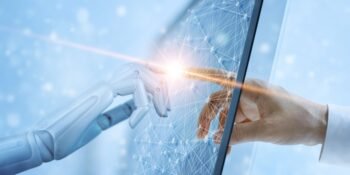The data storage landscape has significantly transformed in recent years. Solid-state drives (SSDs), innovative storage devices, have revolutionized how we store and access data, offering faster speeds, greater reliability, and improved performance compared to traditional hard disk drives (HDDs). This article explores the technology behind SSDs, their advantages, and their impact on various industries and everyday computing.
What is a Solid-State Drive?
Solid-state drives (SSDs) are non-volatile devices that have revolutionized how data is stored, accessed, and managed. The storage device uses integrated circuit assemblies to store data persistently. Unlike traditional hard disk drives (HDDs), which use spinning magnetic disks and mechanical components, SSDs utilize NAND flash memory technology to store data electronically. It allows faster data access, lower latency, and increased durability, making the storage solution ideal for various applications, from personal computers to enterprise-grade storage systems.
The innovative approach has numerous advantages, making SSDs increasingly popular across various industries and computing applications. NAND flash memory, the core technology behind Solid-State Drives, consists of memory cells that can retain data even when power is removed. These memory cells are organized into blocks, pages, and cells, and data is stored by applying electrical charges to the cells. When reading data, the controller within the SSD detects the amounts and retrieves the stored information.
Advantages of Solid State Drives
SSDs’ numerous advantages over traditional HDDs have driven their adoption. Let’s explore some key benefits of using Solid-State Drives.
Enhanced Performance
SSDs offer significantly faster data transfer speeds than HDDs. They can provide near-instantaneous access to data with no moving parts, resulting in shorter boot times, quicker application launches, and improved overall system responsiveness. This performance boost translates into enhanced productivity and a more efficient computing experience.
Reliability and Durability
Solid-state drives are highly reliable storage devices. Without mechanical components, such as spinning disks or read/write heads, there is a reduced risk of mechanical failure or data loss due to physical damage. The storage solutions are also more resistant to shock, vibrations, and temperature fluctuations, making them ideal for portable devices and harsh operating environments.
Energy Efficiency
They consume significantly less power than HDDs. The absence of moving parts means that the solid-state drives do not require energy to spin disks or position read/write heads. This results in lower power consumption and longer battery life for laptops and other devices. This energy efficiency is environmentally friendly and leads to cost savings in the long run.
Compact Form Factor
The storage solutions are available in smaller form factors, making them ideal for devices with space constraints, such as ultra-thin laptops, tablets, and compact desktop systems. The compact size of Solid-state drives also enables flexibility in design and allows for innovative form factors in emerging technologies like Internet of Things (IoT) devices and wearable technology.
Quiet Operation
Since the storage devices do not have moving parts, they operate silently. Unlike HDDs, which produce audible noise due to spinning disks and mechanical components, SSDs provide a noiseless storage solution. This quiet operation is particularly beneficial in noise-sensitive environments or when using devices close to the user.
Impact on Industries and Everyday Computing
The widespread adoption of faster storage devices has significantly impacted various industries and everyday computing scenarios. Let’s explore some key areas where SSDs have made a difference.
Personal Computing
They have transformed the personal computing experience, offering faster boot times, reduced application loading times, and improved overall system responsiveness. Tasks like opening large files, editing videos, and running resource-intensive applications become quicker and smoother, enhancing productivity for casual users and professionals.
Gaming
Gaming enthusiasts have embraced SSDs for their ability to deliver faster game loading times and reduced in-game stuttering. The storage solution enables faster asset loading, allowing gamers to quickly jump into their favorite games and experience seamless gameplay with reduced lag and load times.
Enterprise Storage
Solid-state drives have revolutionized storage systems in enterprise environments, providing high-performance solutions for data centers and server applications. They deliver faster data access, accelerate data-intensive tasks, and improve application responsiveness, increasing productivity and reducing latency for critical business operations.
Data Centers
Large-scale data centers rely on the speed, reliability, and energy efficiency of Solid-State Drives to handle vast amounts of data and provide responsive services. SSDs enable faster data retrieval and processing, optimizing cloud computing performance, big data analytics, and virtualized environments.
Consumer Electronics
Storage devices, including smartphones, tablets, digital cameras, and portable media players, have become integral to consumer electronics. SSDs’ compact size, low power consumption, and durability make them ideal for these devices, improving storage capacity, battery life, and overall user experience.
Advance NVMe SSD
NVMe SSDs (Non-Volatile Memory Express Solid-State Drives) use the NVMe interface to connect to the computer’s motherboard, providing faster data transfer speeds than traditional SATA SSDs. NVMe SSDs take advantage of the high-speed PCIe (Peripheral Component Interconnect Express) lanes, allowing for significantly improved performance, particularly in tasks that involve large amounts of data, such as gaming, video editing, and heavy multitasking.
NVMe SSDs are ideal for users who require high-performance storage, such as gamers, content creators, and professionals working with large datasets or 3D modeling software. They are also increasingly common in high-end personal users and enterprise environments where fast data processing is crucial.
Conclusion
Solid-state Drives (SSDs) have transformed the storage landscape by offering superior performance, reliability, energy efficiency, and durability compared to traditional hard disk drives (HDDs). With faster data access speeds, increased responsiveness, and compact form factors, storage devices have become essential components in personal computers, enterprise storage systems, data centers, and consumer electronics. As the demand for faster and more efficient storage solutions continues to grow, SSDs are poised to play a pivotal role in shaping the future of data storage technology.










